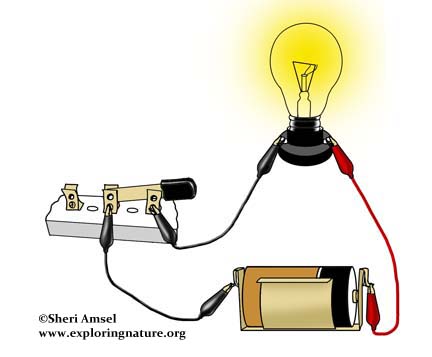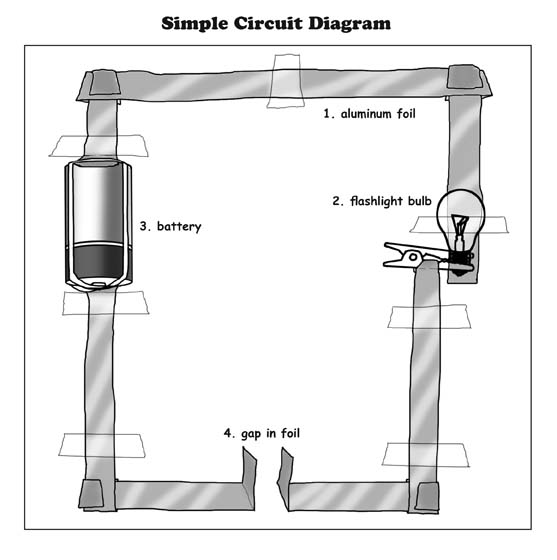

Goals:
1. Learn about the parts of a circuit.
2. Understand how the flow of electrical current moves between the power source and device and the role of the conductors.
3. Learn about which materials conduct electricty and which do not.
Materials for Each Group:
• 1 D-cell or C-cell battery
• 4 strips of aluminum foil, about 1cm (1/2 inch) wide and 12-15 cm (5-6 in.)
• 1 flashlight bulb (1.5 - 3-volt)
• sturdy rubber band
• 1 alligator clip for each group
• 1 square card board (can be cut from a cereal box)
• scissors
• tape
• penny
• pencil
• plastic pen
• metal pen or spoon
Directions:
1. Each group should layout their 4 strips of tinfoil in a square and fold the corners together (see diagram).
2. Using your scissors, cut the left side strip in the middle, fold up each end into a flap and fit the battery between the flaps. Tape the tin foil in place (see diagram).
3. Using the rubber band, secure the folded ends of the tin foil against the battery terminals at each end.
4. Now cut the bottom strip in the middle and fold up the flaps. This represents an open switch.
5. Now cut the right strip in the middle. Tape down the top end (see diagram).
6. Pinch the metal bottom of the bulb securely in the alligator clip. Then wrap the flap of the bottom end of the right strip around the alligator clip (see diagram).
7. Set the bulb onto the top end (see diagram).
8. Using your fingers pinch the two flaps of the bottom strip together. This will close the switch.
9. What happens? Explain this in terms of an active electrical circuit on the data sheet. (Data Sheet in PDF below.)
10. Connect the bottom flaps through each of the test conductors (penny, pencil, plastic pen, metal pen or spoon) and record whether they are conductors.
11. Label the Simple Circuit Diagram with the proper names of each part of the circuit. (Labeling Page in PDF below.)


